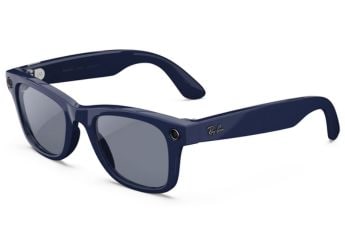- Home
- Science
- Science News
- NASA Says No Evidence of Atmosphere on Ultima Thule
NASA Says No Evidence of Atmosphere on Ultima Thule

Photo Credit: NASA/Johns Hopkins University Applied Physics Laboratory/Southwest Research Institute
New Horizons spacecraft which explored the ancient Kuiper Belt object nicknamed Ultima Thule, earlier this week, has yielded that the distant object has no evidence of an atmosphere, NASA has said.
New Horizons completed the farthest flyby in history when it came within about 2,200 miles (3,500 kilometres) of Ultima Thule at 12.33am EST on January 1, zooming past the object at more than 32,000 miles (51,000 kilometres) per hour.
Data from NASA's New Horizons spacecraft is yielding scientific discoveries daily.
Besides finding no evidence of an atmosphere, the initial data analysis also found no evidence of rings or satellites larger than one mile in diameter orbiting Ultima Thule, the US space agency said in a statement on Thursday.
The colour of Ultima Thule matches the colour of similar worlds in the Kuiper Belt, as determined by telescopic measurements.
The two lobes of Ultima Thule - the first Kuiper Belt contact binary visited - are nearly identical in colour. This matches what we know about binary systems which haven't come into contact with each other, but rather orbit around a shared point of gravity, NASA said.
"The first exploration of a small Kuiper Belt object and the most distant exploration of any world in history is now history, but almost all of the data analysis lies in the future," said Alan Stern of the Southwest Research Institute in Boulder, Colorado.
Data transmission from New Horizons will pause for about a week while the spacecraft passes behind the Sun as seen from here on Earth. Data transmission resumes January 10, starting a 20-month download of the spacecraft's remaining scientific treasures.
"Those of us on the science team can't wait to begin to start digging into that treasure trove," Stern noted.
Located 6.5 billion kilometres from Earth, Ultima Thule means "beyond the known world".
The New Horizons flyby of Ultima Thule could help scientists better understand what conditions were like when our Solar System formed billions of years ago.
New Horizons' extended mission also includes observations of more than two-dozen other Kuiper Belt objects, as well as measurements of the plasma, gas and dust environment of the Kuiper Belt.
Catch the latest from the Consumer Electronics Show on Gadgets 360, at our CES 2026 hub.
- Samsung Galaxy Unpacked 2025
- ChatGPT
- Redmi Note 14 Pro+
- iPhone 16
- Apple Vision Pro
- Oneplus 12
- OnePlus Nord CE 3 Lite 5G
- iPhone 13
- Xiaomi 14 Pro
- Oppo Find N3
- Tecno Spark Go (2023)
- Realme V30
- Best Phones Under 25000
- Samsung Galaxy S24 Series
- Cryptocurrency
- iQoo 12
- Samsung Galaxy S24 Ultra
- Giottus
- Samsung Galaxy Z Flip 5
- Apple 'Scary Fast'
- Housefull 5
- GoPro Hero 12 Black Review
- Invincible Season 2
- JioGlass
- HD Ready TV
- Laptop Under 50000
- Smartwatch Under 10000
- Latest Mobile Phones
- Compare Phones
- Honor Win RT
- Honor Win
- Xiaomi 17 Ultra Leica Edition
- Xiaomi 17 Ultra
- Huawei Nova 15
- Huawei Nova 15 Pro
- Huawei Nova 15 Ultra
- OnePlus 15R
- Asus ProArt P16
- MacBook Pro 14-inch (M5, 2025)
- OPPO Pad Air 5
- Huawei MatePad 11.5 (2026)
- Xiaomi Watch 5
- Huawei Watch 10th Anniversary Edition
- Acerpure Nitro Z Series 100-inch QLED TV
- Samsung 43 Inch LED Ultra HD (4K) Smart TV (UA43UE81AFULXL)
- Asus ROG Ally
- Nintendo Switch Lite
- Haier 1.6 Ton 5 Star Inverter Split AC (HSU19G-MZAID5BN-INV)
- Haier 1.6 Ton 5 Star Inverter Split AC (HSU19G-MZAIM5BN-INV)












